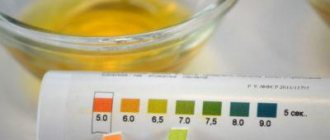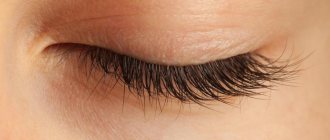The effect of hashish on the human body
There are cannabinoid receptors in the human brain, which the drug binds to. Hashish begins to affect certain brain centers that are responsible for coordination of movements, memory and learning new information. As a result of consumption, a person experiences euphoria, laughter, increased sensitivity, inspiration, and improved mood. In some cases, the drug gives a relaxing effect and makes the person drowsy. Those addicted to hashish have a heightened perception: the colors become brighter, emotions are stronger, they often engage in creative work in a state of drug intoxication.
How long it takes for hashish to “release” depends on several factors, including the length of time and frequency of use, product quality, dosage, gender, age and health status of the addicted person. Among the negative consequences of using cannabinoid drugs are: panic attacks, paranoia, unreasonable fears, double consciousness. Possible loss in space and time.
Among the obvious signs of dependence on hashish are: lethargy, slowness, dilated pupils, redness of the whites of the eyes, smooth movements, thirst, hunger. With due diligence, they can be hidden from society. However, not from modern drug addiction. Narcologists know exactly how long it takes for hashish to be eliminated from the body, so they will always be able to determine its presence. With the help of modern drugs and equipment, it is easy to determine from human biological fluids what, in what quantities and how long ago the addict used. If he smoked "plan", the tests will certainly show a positive result. Moreover, despite the fact that it is a herbal drug, the removal of hashish from the body takes quite a long time.
How long does it take for hashish to leave the body?
It is important for addicts to know how long it takes for hashish to be eliminated from human biological fluids. It is worth saying that even with a one-time use of the drug, a narcologist using tests will quickly detect traces of THC in a person’s blood. How long does it take for hashish to be eliminated from the body? In fact, cannabinoid drugs can remain in human tissue for months and even years, especially with long-term regular use. How can a doctor recognize hashish addiction?
Rehabilitation in
Be careful when choosing a drug treatment clinic. An important criterion is the number of medications used. By nature, these drugs are also poisons and their use also does not go unnoticed. It is impossible to improve a person's mental or emotional state with the help of pills. But you can change one addiction to another (switch from marijuana to antidepressants). The best way to help a drug addict:
- Relieving withdrawal symptoms (if necessary);
- Long-term rehabilitation in a hospital and completion of the program. One of the best programs is Narconon because it allows you to:
- find and eliminate the causes of addiction;
- remove the remains of hashish and other toxins from the body;
- increase abilities, including the ability to face life (instead of running from problems into the world of illusions and intoxication);
- learn how to build your life, how to be happy (after all, people start using drugs to lift their spirits and feel euphoria).
- and that's not all.
Call us!
Share:
Drug precursors - what are they?
Main types of modern drugs
How long does it take for hashish to leave the body?
How is the presence of a drug determined? The fact is that today you can take an analysis not only of blood and urine, but also of saliva, hair and nails, in which THC lasts much longer. Drug addicts are very interested in the question: how long does it take for hashish to disappear from urine?
In fact, the time it takes for hashish to come out of the urine depends on various factors:
- gender;
- age;
- length of service;
- quality of the drug;
- type of drug;
- health status of the addict;
- frequency of use;
- existing diseases.
It is these conditions that primarily determine how many days it takes for hashish to leave the human body. And yet, how many days does it take for hashish to be eliminated? Find out further in the article.
First aid rules
First of all, you need to call drug treatment help, without holding out hope that “everything will go away on its own” - it won’t. Classic measures - activated carbon and drinking more - will help little in this case, although they will not be superfluous either. The patient needs to ensure airway patency and constantly monitor the heartbeat, since the main cause of death in case of hashish overdose is myocardial infarction.
If the heartbeat stops or breathing stops, appropriate resuscitation measures must be performed: chest compressions and artificial respiration.
How to quickly “come away” from hashish?
What other factors determine how many days it takes for hashish to be eliminated from the body?
- Human Constitution. As a rule, narcotic substances accumulate in fatty tissues, and obesity slows down the metabolism and elimination of half-life products of cannabinoids.
- Metabolic disorder. Poor metabolism naturally delays the removal of THC from the body naturally.
- Age. The older a person is, the slower his metabolic processes proceed, but it is worth taking into account the individual characteristics of the addict.
- Exercise stress. If a person manages to exercise in parallel with drug addiction, or engages in heavy physical labor at work, the level of body fat decreases, which speeds up metabolism and changes how long it takes for hashish to be eliminated from the urine.
- Drinking fluids. If a person drinks little water during the day, cannabinoids are retained in his body, but if the consumption is normal and higher, then metabolic processes in the body proceed faster.
- Detoxification activities. This is a bath or sauna that increases sweating.
How to “weather” hashish? Naturally, in order to speed up the removal of hashish from the body, you need to eat right, drink enough water and food rich in calcium, and exercise. So how long does it take for hashish to come out of urine?
How long does it take for hashish to leave the body?
Here we come to the main question of the article. Specialists at the drug treatment clinic of the Center for Health, who have extensive experience in treating and diagnosing drug addiction, say that hashish is eliminated from the addict’s body on average within 1 month from the date of last use. European colleagues report that even a one-time use of the drug will leave its mark on the body: hashish in this case will be released within 2-3 days. If we are talking about a person who regularly smokes hash, then the period of removal of the drug from the body will be from a week to ten days.
If it was not possible to detect and recognize THC after collecting urine and blood tests, there are more modern and sophisticated methods that make it possible to accurately determine whether a given person has used drugs in the near future or not. It is surprising that many tests today can show a positive result even 1.5 years after the last use of hashish.
The test results can be affected by the personal characteristics of the addict, his lifestyle, the amount and frequency of drug use. There are many tricks that drug addicts go to in order not to be recognized. However, modern drug addiction does not stand still, which makes it possible to identify a person with drug addiction with almost one hundred percent probability.
This is especially important when it comes to breaking the law or issuing a driver's license. Drug addicts are prohibited from getting a license or driving, as they pose a threat to both themselves and others.
Duration of presence in urine
How long hashish remains in the urine directly depends on factors such as weight, amount of substances consumed and metabolic rate. In addition, the regularity of administration, as well as its duration, are also taken into account. With a single dose, hashish is contained in the urine for five days. With periodic use, traces of it can be found within ten to fifteen days. Regular use of the drug leads to traces of it remaining in the body for forty-five days.
Tests to identify hashish
Today, there are many different tests that help doctors identify hashish addiction.
By saliva
Unfortunately, the test based on saliva analysis is the least effective. Some relatives, to confirm their suspicions, buy drug addiction tests at the pharmacy. Testing at home will show a positive result just an hour after smoking hashish. As you can see, the effectiveness of such a rapid test is questionable. If a person consumed THC half a day ago, the test result drops to zero. That is, if the test was carried out 10-12 hours after smoking the plan or Afghani, the accuracy of the test will be minimal. Most likely it will show a negative result.
By urine
In this case, the tests show greater effectiveness, since they can easily recognize even the timing and duration of drug use. The period for removing hashish from urine varies from 3 weeks to 3 months. Naturally, it depends on the frequency of use, experience, age and quality of the drug, as well as other characteristics of the addict’s body.
This biochemical analysis can be carried out both at home using a pharmacy test, and in the hospital of our drug treatment clinic. The period for detecting hashish in urine varies from 5 to 7 days. That is, within a week from the date of last use, the test will show a positive result. However, there are even more accurate laboratory tests and tests that can detect and distinguish traces of THC one month after consumption. As a result, the drug can be detected in urine within 40-50 days.
Hair and nails
Among the highly accurate rapid drug tests, narcologists highlight tests that determine the presence of drugs in the hair and nails of an addict. The test is effective for 1.5-2 months from the date of last use. However, with long-term use, it is possible to recognize cannabinoid drugs even 1.5 years after quitting them. As you can see, hashish, being a concentrated narcotic substance, lingers in organ tissues for a very long period.
Do you want to know about the cost of services?
8 call our specialist
Prevention is better than cure
The best solution to the problem of hashish poisoning (overdose) is prevention. Having seen that a loved one, be it a friend or relative, is “slightly carried away,” you need to try to convince him to stop this harmful activity, and in the case of an already developed addiction, contact a drug addiction specialist. This is the only way to prevent the occurrence of that terrible situation when the only thing that can be done for someone very dear is to simply look at the clock and wait for the ambulance to arrive.
Khalyapin Sergey Grigorievich
Psychiatrist-narcologist
Treatment for hashish addiction
Treatment for hashish addiction is possible. It takes place in our drug rehabilitation Center for Healthy Youth. Our branches are located throughout Russia, so you can easily contact our organization in any city in the country. Treatment for hashish addiction takes place in our clinic in stages and begins with complete detoxification; it is almost impossible to find traces of the drug after completely cleansing the body of toxins.
Next, the physical health of the addict is restored, the functioning of the internal organs, brain, and psychological state is normalized. After which comes the most important stage - comprehensive psychosocial rehabilitation. Only after completing all stages of therapy can you get rid of your addiction and craving for drugs forever.
Types and names
Based on their origin, the following types of drugs are distinguished: natural hashish and synthetic hashish:
- Natural - made only from hemp. The color can range from light green to dark brown.
- Synthetic hashish is obtained from artificial cannabinoids, with the addition of various impurities. Their composition changes all the time, which is very dangerous, as it is easy to get an overdose. Has many color options: white, red, brown, red, green, black.
By texture:
- Dry (pressed).
- Solid.
- Liquid.
- Plastic.
According to the method of production, the types of hashish have the following names:
- Pollen - dried plants are wrapped in cloth and the pollen is knocked out of them into a container, and then pressed into layers.
- Matsanka - rub the inflorescence with your palms, and then roll the resinous substance from the skin and get hashish balls.
- Khimka is the most complex method; solvents (alcohol, ether) are used in the manufacturing process, but the product is of low quality and the results of its use are unpredictable.











